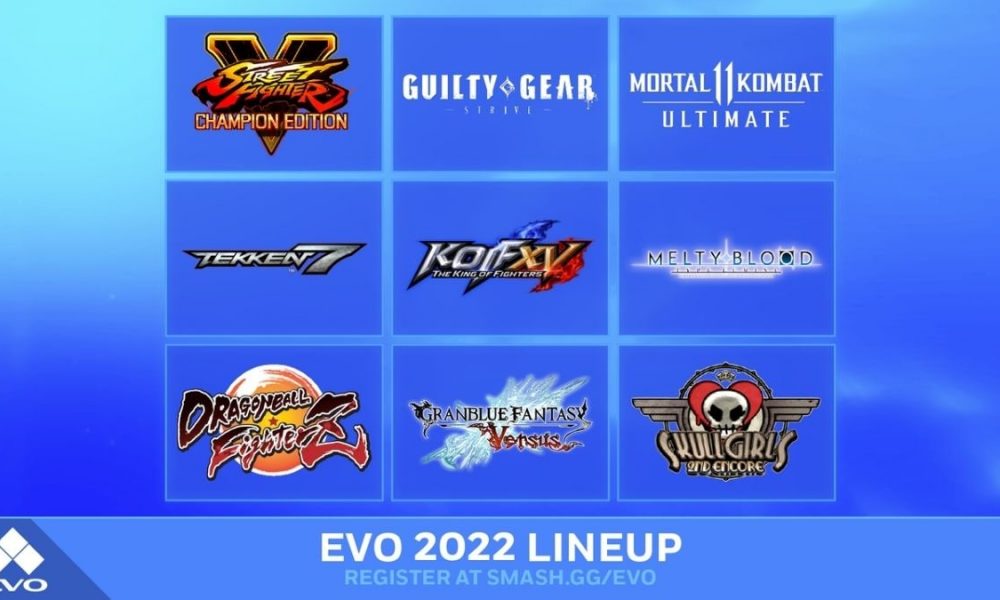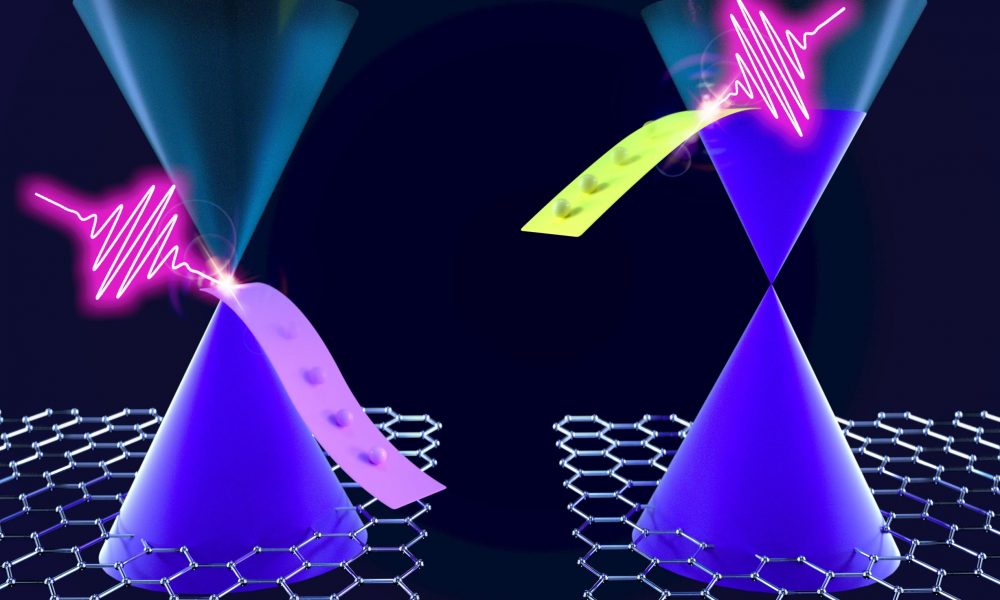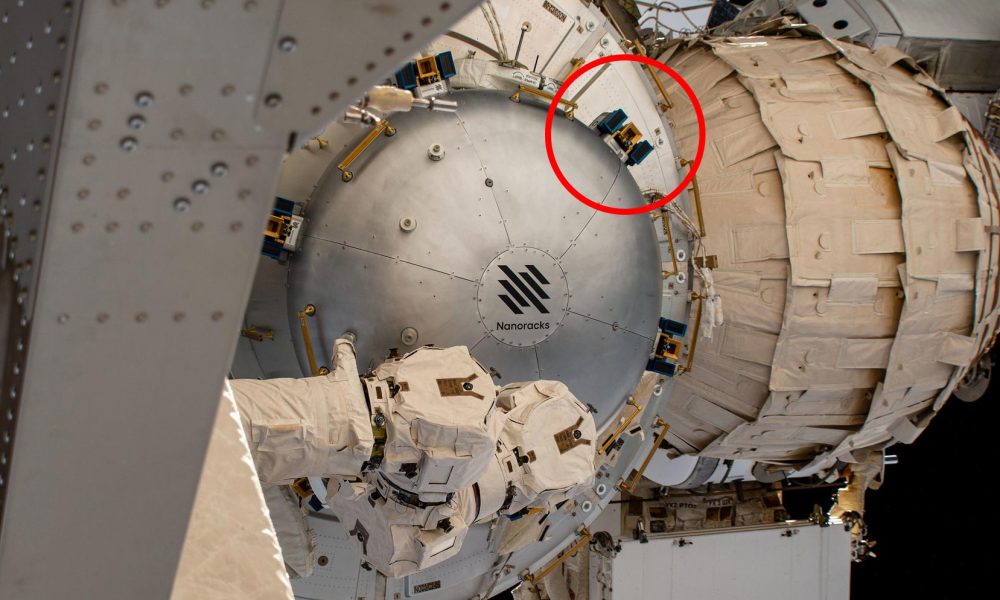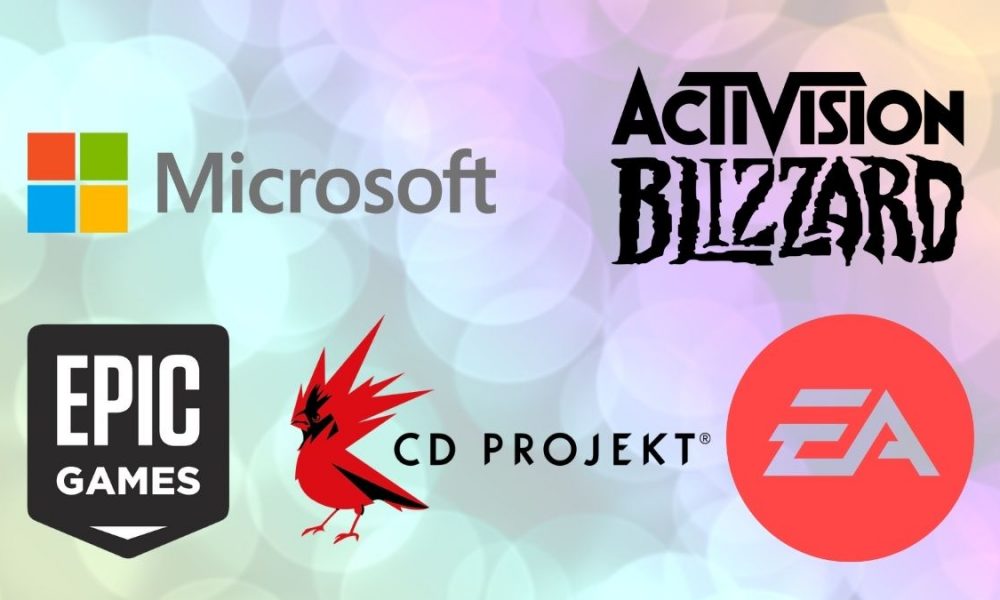EVO (Evolution Championship Series), the annual fighting games esports tournament, has announced the lineup of games to be shown on the main stage in 2022. The August tournament will host 9 games live from Mandalay Bay in Las Vegas. Also Read – Sony State of Play Announced: From God of War Ragnarok to Hogwarts Legacy, What to Expect Here is the list of games hosted in EVO 2022: Also read – Warner Bros, Disney and Sony stand united against Russia EVO 2022 Tournament Matches Street Fighter V: Champion Edition – PS4 (Capcom) Also read – Sony and Honda are teaming up to build a new electric vehicle company Guilty Gear -Strive- PS4 (Arc System Works) Mortal Kombat 11: Ultimate – PS4 (Warner Bros. Games) TEKKEN 7 – PS4 (Bandai Namco Entertainment) THE KING OF FIGHTER XV – PS4 (SNK) MELTED BLOOD: TYPE LUMINA – PS4 (Project Lumina) DRAGON BALL FighterZ – PS4 (Bandai Namco Entertainment) Granblue Fantasy: Versus – PS4 (Cygames and XSEED) Skullgirls: Encore 2 – PS4 (Fall Games) Registration for Evo 2022 is NOW OPEN! Go to https://t.co/WgXv1e2fEK and register now! We can’t wait to see you all offline and in person at Mandalay Bay in Las Vegas August 5-7! Thank you to our special guests and viewers for joining us at the reveal show of the Evo 2022 lineup! pic.twitter.com/qiJwz2eGwL — EVO (@EVO) March 9, 2022 While the 2021 EVO event has been canceled due to complications related to COVID, fans will be able to experience the popular esports championship as an in-person audience this year. If you are unable to attend physically, you can follow the tournament on EVO’s official Twitch channel. “We are extremely excited to present a series of fighting games for EVO 2022 that represent so many of the genre’s player bases. There’s nothing quite like the energy of the global fighting games community as we gather for EVO, and I’m really looking forward to seeing what happens as we embark on the next chapter of the event series together later this year,” said General Manager Rick Thiher. Super Smash Bros. will not be participating in this year’s lineup. Meanwhile, Nintendo already decided last month not to host an iteration at EVO 2022. According to reports, this is probably because Sony bought the tournament last year. However, the EVO 2022 tournament will be held from August 5th to 7th at the Mandalay Bay Resort and Casino in Las Vegas.
Controlling How Fast Graphene Cools for an Unprecedented Level of Control of Optical Properties
Graphene charge carriers lying on different energetic levels, represented by the Dirac cones, which, depending on the number of charge carriers, reach the neutral point (blue level on the left cone) or far into the conduction band (blue level on the right cone). In both cases, the photoexcited charge carriers relax with faster (left side) or slower (right side) dynamics. Photo credit: Politecnico di Milano – CNR An international study published in ACS Nano has demonstrated an unprecedented level of control over optical properties[{” attribute=””>graphene. The work has promising applications in different technological fields ranging from photonics to telecommunications. Graphene is the thinnest material ever produced, with the thickness of a single atomic layer, thinner than a billionth of a meter, it is able to efficiently absorb light from the visible to the infrared through the photoexcitation of its charge carriers. After light absorption, its photoexcited charge carriers cool down to the initial equilibrium state in a few picoseconds, corresponding to a millionth of a millionth of a second. The remarkable speed of this relaxation process makes graphene particularly promising for a number of technological applications, including light detectors, sources, and modulators. A recent study published in ACS Nano has shown that the relaxation time of graphene charge carriers can be significantly modified by applying an external electrical field. The research was conceived within an international collaboration between the CNR-IFN, Politecnico di Milano, the University of Pisa, the Graphene Center of Cambridge (UK) and ICN2 of Barcelona (Spain). “The change in the relaxation time of charge carriers in graphene that we have observed, demonstrates an unprecedented level of control on the optical response of a crystal and allows to obtain a large variety of behaviors using a single material” says Eva Pogna, researched from CNR-IFN, first author of the work. This work paves the way to the development of devices that exploit the control of the relaxation time of charge carriers to support novel functionalities. For example, if graphene is used as saturable absorber in a laser cavity to generate ultrashort light pulses, by changing the relaxation time of the charge carriers, we can control the duration of the output pulses. “The specific device that we have used to study graphene, proved to be crucial to observe the strong tunability of its optical properties with the external electric field, allowing to change the number of charge carriers over a broad range by exploiting ionic liquid gating, which is a state-of-the-art technology introduced to study superconductors” explains Andrea Ferrari, director of the Graphene Center in Cambridge. The graphene-based device has been studied by ultrafast spectroscopy, which allowed to monitor the variation of the relaxation time of the charge carriers. “This work represents the latest step of a long-standing research collaboration devoted to the study of the ultrafast carrier dynamics in graphene, aimed at exploring the great potential of this fascinating material” as added by Klaas-Jan Tielrooij, leader of the Ultrafast Dynamics in Nanoscale Systems group at ICN2. “This discovery is of large interest for a number of technological applications, ranging from photonics, for pulsed laser sources or optical limiters that prevent optical components damaging, to telecommunication, for ultrafast detectors and modulators” concludes Giulio Cerullo, professor of the Physics Department of Politecnico di Milano. Reference: “Electrically Tunable Nonequilibrium Optical Response of Graphene” by Eva A. A. Pogna, Andrea Tomadin, Osman Balci, Giancarlo Soavi, Ioannis Paradisanos, Michele Guizzardi, Paolo Pedrinazzi, Sandro Mignuzzi, Klaas-Jan Tielrooij, Marco Polini, Andrea C. Ferrari and Giulio Cerullo, 21 February 2022, ACS Nano.DOI: 10.1021/acsnano.1c04937
GTA 5 new-gen version for PS5, Xbox Series X India prices revealed: Check details
Rockstar Games will release the remastered versions of Grand Theft Auto V and Grand Theft Auto Online for PlayStation 5 and Xbox Series X | release S game consoles on March 15th. Ahead of the release, Rockstar Games announced the prices for GTA 5 and GTA Online. The company is currently offering discounted prices to customers who pre-order the titles. It has also announced that GTA 5 is now available for preload on PlayStation and Xbox. Also Read – Sony State of Play Announced: From God of War Ragnarok to Hogwarts Legacy, What to Expect GTA 5 Extended and improved version of the new generation It has already been announced that the new generation GTA 5 Expanded and Enhanced game will be available in two versions: story and multiplayer. The new version of the game offers support for up to 4K resolution, games up to 60 fps, faster loading times, HDR options, improved texture quality, ray tracing and 3D audio. Also read – GTA 5 is on sale with a great deal for Xbox owners: Check out the latest deal The PS5 version of GTA 5 costs 2,799 rupees and includes both the story mode and GTA Online. The game is currently on sale on PlayStation Store until June 14th at an introductory price of Rs 700. Apart from that, GTA Online (sold separately at Rs 1,399) will be made available free of charge for PS5 players for the first three months on the platform. Also read – Sony PlayStation Plus March 2022 Free Games: Ghost of Tsushima: Legends, Ghostrunner, more Now comes the Xbox version, which also costs Rs 2,799 and is on sale at a reduced price of Rs 1,399 until June 14th. GTA Online on the platform is currently available for 700 rupees. Players can transfer their Story Mode progress from their PS4 and Xbox One consoles by uploading their save files to the Rockstar Games Social Club. GTA Online character migration begins on March 15th. All players who migrate their save files will receive an upgraded Hao’s Special Works Karin S95 sports car, a new set of Chameleon paints, and Hao’s Special Work Racing Outfit for free.
Space Station To Host “Self-Healing” Quantum Communications Technology Demo
SEAQUE is housed on the International Space Station by the Nanoracks Bishop airlock. The blue and gold mounts on the side of the airlock are for external payloads. The technology demonstration will be installed at one of these locations. Photo credit: NASA the[{” attribute=””>NASA-funded experiment will test two technologies that could eventually enable quantum computers to communicate with each other no matter where they are located. A tiny experiment launching to the International Space Station later this year could set the stage for a future global quantum network. Called the Space Entanglement and Annealing QUantum Experiment (or SEAQUE), the milk-carton-size technology demonstration will test two communications technologies in the harsh environment of space. Quantum computers hold the promise of operating millions of times faster than conventional computers, and distributed quantum sensors may lead to new understandings of Earth and our place in the universe by measuring minute changes in gravity. But for quantum computers or quantum sensors to communicate, they will require a dedicated communications network. A key component of this network will be space “nodes” that can receive and transmit quantum data to and from the ground via free-space optical communications. EAQUE sets out to prove the viability of technologies that could enable orbiting nodes to securely connect quantum transmitters and receivers over great distances. To do that, these nodes will need to produce and detect pairs of entangled photons. Eventually, transmitting such photons to quantum computers on the ground could provide the foundation for quantum cloud computing – the means to exchange and process quantum data regardless of where the computers are located. Once attached to the space station’s exterior, SEAQUE will also test a technique to help space-based nodes “self-heal” from radiation damage, a continual challenge of maintaining delicate instruments in space. “Demonstrating these two technologies builds the foundation for future global quantum networks that can connect quantum computers located hundreds or even thousands of miles apart,” said Makan Mohageg, SEAQUE co-investigator at NASA’s Jet Propulsion Laboratory in Southern California. Like the network it’s intended to enable, the project is global. The SEAQUE collaboration includes scientists and students from the University of Illinois Urbana-Champaign, who are leading the project; the University of Waterloo in Ontario, Canada; National University of Singapore; Montana-based industrial partner AdvR, Inc.; Texas-based commercial space systems provider Nanoracks; and JPL. The Power of Entanglement Pairs of entangled photons are so intimately connected that measuring one immediately affects the results of measuring the other, even when separated by a large distance. This is a fundamental characteristic of quantum mechanical systems. SEAQUE’s entangled-photon source splits high-energy photons into pairs of entangled “daughter” photons. Those daughter photons are then counted and their quantum properties are measured by the instrument’s internal detectors. Whereas other space-based quantum experiments have depended on bulk optics (which focus light into a special crystal) to generate entangled photons, SEAQUE relies on an integrated source of entangled photons using a waveguide – a first for spacecraft. A waveguide is a microscopic structure that acts like an expressway for photons, directing their transmission with little loss of the quantum state. “SEAQUE will demonstrate a new and never-before-flown entanglement source based on integrated optics,” said Paul Kwiat, the project’s principal investigator at the University of Illinois Urbana-Champaign. “Such a source is inherently much smaller, more robust, and more efficient at producing photon pairs than the bulk optic entanglement sources used in previous space experiments.” or example, where those bulk optics require delicate optical realignment by an operator on the ground after being shaken up during launch, SEAQUE’s optics will not. “If you’re building a global quantum network, connecting hundreds of quantum ground stations on different continents, you can’t afford to have a person-in-the-loop keeping the sources at each of the nodes in optical alignment,” said Mohageg. “A monolithic waveguide-based source like the one SEAQUE is going to fly will be a huge advance toward a scalable, global quantum information network.” Laser Healing The technology demonstration’s reliability could get another boost if SEAQUE proves it can also repair damage inflicted on it by radiation. Quantum communications nodes will require highly sensitive detectors to receive the single-photon quantum signals from Earth’s surface. As high-energy particles, or radiation, from space hit the nodes’ detectors, they will create defects over time. These defects can manifest themselves as “dark counts” in a detector’s output, creating noise that will eventually overwhelm any quantum signal from the ground. Left unchecked, space radiation will ultimately degrade such detectors so much that they will need to be replaced regularly, impeding the viability of a global quantum communications network. While detecting signals from Earth is beyond the scope of this technology demonstration, SEAQUE will use its detector array to count the photons generated by its entanglement source. And SEAQUE will use a bright laser to periodically repair radiation-induced damage that will affect the detector array’s count – another first. “In tests on the ground, we found that this technique causes the defects in the lattice to ‘bubble away’ – a process known as annealing – thereby reducing detector noise and potentially prolonging the life of in-space quantum nodes, facilitating a robust global network,” said Kwiat. SEAQUE will be hosted on the space station by the Bishop airlock, owned and operated by Nanoracks. Nanoracks is also providing the mission operations services and coordinating the launch services. The integrated optical entangled photon source for SEAQUE is developed by AdvR, Inc. Expected to launch no earlier than August 2022, the technology demonstration is funded by NASA’s Biological and Physical Sciences Division within the agency’s Science Mission Directorate.
GTA 5 selling with a great deal for Xbox owners: Check the latest offer
Grand Theft Auto (GTA) 5 is currently one of the most popular open world games in the world. Rockstar Games will launch its new-gen version of GTA 5 for the PS5 and Xbox Series X | publish S later this month. For Xbox owners, this might be the best time to get the new version, which is heavily discounted at 50 percent. Also read: Microsoft sets up another data center in Hyderabad According to a Microsoft list discovered by journalist Ben T, GTA 5’s story mode will be discounted by 50 percent through June 14 for Xbox users. This discount also applies to the new generation of GTA 5, which will be released on March 15th. Also read – Microsoft, EA, Epic Games, Activision Blizzard stand with Ukraine; Sales and service suspended in Russia This will be a great deal for PlayStation users considering it’s free online so getting the story mode alongside it will likely be very cheap. Also read – Russia-Ukraine conflict: How tech companies are helping people in Ukraine — Ben T (@videotech_) March 7, 2022 It’s not clear if the deal will also be made available to PlayStation owners. Ben T’s follow-up tweet appears to be a speculation that Rockstar could strike a similar deal for PlayStation owners. So far, no such deal has been announced for the PlayStation. Note, however, that GTA Online will be made available to PS5 players for free for the first three months on the platform. GTA 5 has maintained a constant pace of sales for almost a year, and with the release of the new-gen version, we expect sales to increase. GTA 5 Expanded and Enhanced New-Gen Version is scheduled for release on March 15th. It will be available in two versions: story and multiplayer. The game also comes with three graphics settings options for the PS5 and Xbox Series X, maximizing the new hardware for upscaled 4K and ray-traced graphics at 60 frames per second.
Toward Solid-State Lithium-Ion Batteries That Pack Twice As Much Energy per Pound
Through David L. Chandler, Massachusetts Institute of Technology March 8, 2022 A method for stabilizing the interfaces in solid-state lithium-ion batteries opens up new possibilities. In the never-ending quest to pack more energy into batteries without increasing their weight or volume, one particularly promising technology is the solid state battery. In these batteries, the usual liquid electrolyte, which transports charges back and forth between the electrodes, is replaced by a solid electrolyte layer. Not only could such batteries potentially deliver twice the energy for their size, they could virtually eliminate the fire hazard associated with today’s lithium-ion batteries. But one thing has held solid-state batteries back: instabilities at the interface between the solid electrolyte layer and the two electrodes on either side can dramatically shorten the life of such batteries. Some studies have used special coatings to improve bonding between layers, but this increases the cost of additional coating steps in the manufacturing process. Now a research team has[{” attribute=””>MIT and Brookhaven National Laboratory have come up with a way of achieving results that equal or surpass the durability of the coated surfaces, but with no need for any coatings. These discs were used for testing the researchers’ processing method for solid-electrolyte batteries. On the left, a sample of the solid electrolyte itself, a material known as LLPO. At center, the same material coated with the cathode material used in their tests. At right, the LLPO material with a coating of gold, used to facilitate measuring its electrical properties. Credit: Pjotrs Žguns The new method simply requires eliminating any carbon dioxide present during a critical manufacturing step, called sintering, where the battery materials are heated to create bonding between the cathode and electrolyte layers, which are made of ceramic compounds. Even though the amount of carbon dioxide present is vanishingly small in air, measured in parts per million, its effects turn out to be dramatic and detrimental. Carrying out the sintering step in pure oxygen creates bonds that match the performance of the best coated surfaces, without that extra cost of the coating, the researchers say. The findings are reported in the journal Advanced Energy Materials, in a paper by MIT doctoral student Younggyu Kim, professor of nuclear science and engineering and of materials science and engineering Bilge Yildiz, and Iradikanari Waluyo and Adrian Hunt at Brookhaven National Laboratory. “Solid-state batteries have been desirable for different reasons for a long time,” Yildiz says. “The key motivating points for solid batteries are they are safer and have higher energy density,” but they have been held back from large scale commercialization by two factors, she says: the lower conductivity of the solid electrolyte, and the interface instability issues. The conductivity issue has been effectively tackled, and reasonably high-conductivity materials have already been demonstrated, according to Yildiz. But overcoming the instabilities that arise at the interface has been far more challenging. These instabilities can occur during both the manufacturing and the electrochemical operation of such batteries, but for now the researchers have focused on the manufacturing, and specifically the sintering process. Sintering is needed because if the ceramic layers are simply pressed onto each other, the contact between them is far from ideal, there are far too many gaps, and the electrical resistance across the interface is high. Sintering, which is usually done at temperatures of 1,000 degrees Celsius or above for ceramic materials, causes atoms from each material to migrate into the other to form bonds. The team’s experiments showed that at temperatures anywhere above a few hundred degrees, detrimental reactions take place that increase the resistance at the interface — but only if carbon dioxide is present, even in tiny amounts. They demonstrated that avoiding carbon dioxide, and in particular maintaining a pure oxygen atmosphere during sintering, could create very good bonding at temperatures up to 700 degrees, with none of the detrimental compounds formed. The performance of the cathode-electrolyte interface made using this method, Yildiz says, was “comparable to the best interface resistances we have seen in the literature,” but those were all achieved using the extra step of applying coatings. “We are finding that you can avoid that additional fabrication step, which is typically expensive.” The potential gains in energy density that solid-state batteries provide comes from the fact that they enable the use of pure lithium metal as one of the electrodes, which is much lighter than the currently used electrodes made of lithium-infused graphite. The team is now studying the next part of the performance of such batteries, which is how these bonds hold up over the long run during battery cycling. Meanwhile, the new findings could potentially be applied rapidly to battery production, she says. “What we are proposing is a relatively simple process in the fabrication of the cells. It doesn’t add much energy penalty to the fabrication. So, we believe that it can be adopted relatively easily into the fabrication process,” and the added costs, they have calculated, should be negligible. Large companies such as Toyota are already at work commercializing early versions of solid-state lithium-ion batteries, and these new findings could quickly help such companies improve the economics and durability of the technology. Reference: “Avoiding CO2 Improves Thermal Stability at the Interface of Li7La3Zr2O12 Electrolyte with Layered Oxide Cathodes” by Younggyu Kim, Iradwikanari Waluyo, Adrian Hunt and Bilge Yildiz, 17 February 2022, Advanced Energy Materials.DOI: 10.1002/aenm.202102741 The research was supported by the U.S. Army Research Office through MIT’s Institute for Soldier Nanotechnologies. The team used facilities supported by the National Science Foundation and facilities at Brookhaven National Laboratory supported by the Department of Energy.
World of Warcraft next expansion to be revealed on April 19: What to expect
Blizzard is currently preparing to unveil the next steps for its Warcraft franchise, which will be released on April 19th. It will give players a first look at the next World of Warcraft expansion to follow Shadowlands 2020. Also Read – Activision Announces New Call of Duty Game, New Warzone Experience for 2022 The developer announced in a blog post that they will be releasing a first look at the next World of Warcraft expansion on April 19th. Also Read – Microsoft Intends to Bring Call of Duty and Other Activision Blizzard Games to Nintendo Switch The next expansion is in the starting blocks. Also Read- Warcraft Finally Comes to Mobile Devices, Blizzard Reveals Launch Plans Join us. April 19th. ✨ https://t.co/u5mEMf2WYj pic.twitter.com/dOIyAFBjcM — World of Warcraft (@Warcraft) March 7, 2022 Note that Blizzard didn’t reveal the first look at the next expansion until April 19 and didn’t announce when the expansion would be released to the public. No details have been revealed about the upcoming features either, which we will see as part of the expansion. However, it will likely address the aftermath of the current Shadowlands expansion. This will be the ninth expansion for World of Warcraft and the 10th edition of the entire game, with the original release dating back to 2004. This marks the second time an expansion has been revealed outside of BlizzCon, with the first being Legion that was revealed at Gamescom 2015. With the upcoming World of Warcraft expansion, Blizzard may be trying to recover from criticism it had for Shadowlands’ weak storyline and convoluted endgame progression system. The company released this latest major content patch for Shadowlands last month, and a smaller patch is expected to be released ahead of the next expansion’s release date. According to a developer update from World of Warcraft Game Director Ion Hazzikostas, the company intends to allow crossplay between Alliance and Horde characters before the release of the next expansion. Apart from that, Blizzard has also announced that it will be revealing a mobile game that will take place in the Warcraft universe sometime in May. The company did not give an exact date for the release of the game.
What Is 3G Cellular Service and Why Is It Being Shut Down? An Electrical Engineer Explains
The sun is setting on 3G networks. Credit: Ted/Flickr, CC BY-NC On February 22, 2022, AT&T began shutting down its 3G cellular network. T-Mobile is scheduled to shut it down on July 1, 2022, and Verizon is scheduled to follow suit on December 31, 2022. The vast majority of mobile phones in service operate on 4G/LTE networks and the world has started the transition to 5G, but as many as 10 million phones in the US still rely on 3G service. Additionally, some older devices such as Kindles, iPads, and Chromebooks have cellular network capabilities tied to 3G networks. Similarly, some legacy internet-connected systems such as home security, car navigation, entertainment systems, and solar panel modems are 3G specific. Consumers will need to upgrade or replace these systems. So why are telcos shutting down their 3G networks? As an electrical engineer studying wireless communications, I can explain. The answer starts with the difference between 3G and later technologies like 4G/LTE and 5G. Imagine a family outing. Your spouse is arranging activities at the destination over the phone, your teenage daughter is streaming music and chatting with her friends on her phone, and your younger sibling is playing an online game with his friends. All of these separate conversations and data streams are seemingly being communicated simultaneously over the cellular network. You probably take this for granted, but have you ever wondered how the cellular system can handle all of these activities simultaneously and from the same car? How does it work when everyone in your car is using mobile voice and data service at the same time, and many of the people in the cars around you are too? Communicating all of these messages The answer is a technological trick called multiple access. Imagine using a piece of paper to write messages to 100 different friends, a private message for each person. The multiple access technology used in 3G networks is like writing each message to each of your friends on the whole piece of paper, so all the messages are written on top of each other. But you have a special set of pens of different colors that allow you to write each message in a unique color, and each of your friends has special glasses that only show the color intended for that person. However, the number of colored pencils is fixed. So if you want to send messages to more people than you have colored pencils, you need to start mixing colors. Now when a friend uses their special lenses, they see a small portion of the messages sent to other friends. They won’t see enough to read the other messages, but the overlap might be enough to blur the message meant for them, making it difficult to read. The multiple access technology used by 3G networks is called Code Division Multiple Access or CDMA. It was invented by Qualcomm founder Irwin M. Jacobs along with several other prominent electrical engineers. The technique is based on the concept of spread spectrum, an idea that can be traced back to the early 20th century. Jacobs’ 1991 publication showed that CDMA can increase cellular capacity many times over systems of the time. CDMA enables all mobile phone users to transmit and receive their signals at any time and over any frequency. So if 100 users want to make a call or use cellular service at roughly the same time, their 100 signals will overlap throughout the communication time across the cellular spectrum. The overlapping signals create interference. CDMA solves the interference problem by giving each user a unique signature: a code sequence that can be used to recover each user’s signal. The code corresponds to the color in our paper analogy. If there are too many users on the system at the same time, the codes can overlap. This leads to interference that gets worse as the number of users increases. time slices and spectrum Instead of allowing users to share the entire cellular spectrum at all times, other multiple access techniques divide access by time or frequency. The division over time creates time windows. Each connection can last for several time-slots spread out in time, but each time-slot is so short – a matter of milliseconds – that the mobile phone user is not aware of the breaks of alternating time-slots. The connection seems to be continuous. This time slicing technique is time division multiple access (TDMA). The division can also be made according to frequency. Each connection is assigned its own frequency band within the cellular spectrum and the connection is continuous for its duration. This frequency slicing technique is frequency division multiple access (FDMA). In our paper analogy, FDMA and TDMA are like dividing the paper into 100 strips in each dimension and writing each private message on one strip. For example, FDMA would be horizontal stripes and TDMA would be vertical stripes. In the case of individual strips, all messages are separated. 4G/LTE and 5G networks use Orthogonal Frequency Division Multiple Access (OFDMA), a highly efficient combination of FDMA and TDMA. In the paper analogy, OFDMA is like drawing strips along both dimensions, dividing all the paper into many squares, and allocating a different set of squares for each user according to their data needs. Various techniques for sharing access to wireless network resources. Entropy 2019, 21(3), 273, CC BY-SA Terminus for 3G Now you have a basic understanding of the difference between 3G and the later 4G/LTE and 5G. You might still be wondering why 3G needs to be shut down. It turns out that because of these differences in access technology, the two networks are built with completely different devices and algorithms. 3G cell phones and base stations operate on a broadband system, which means they use the entire cellular spectrum. 4G/LTE and 5G operate on narrowband or multi-carrier systems using parts of the spectrum. These two systems require completely different hardware, from the antenna on the cell tower to the components
Microsoft, EA, Epic Games, Activision Blizzard stand with Ukraine; sales and services suspended in Russia
Microsoft has stopped selling new products and services in Russia due to ongoing Russian aggression on Ukraine. In the announcement post, the company explained that it took this stance because of the “unjustified, unprovoked and unlawful invasion by Russia.” Following in Microsoft’s footsteps, Cyberpunk 2077 developer CD Projekt Red also suspended all digital and merch sales in Russia and Belarus. Also read: Microsoft sets up another data center in Hyderabad Electronic Arts (EA) also initially took a stance, pulling all Russian teams from its FIFA 22 and NHL 22 games. After that, EA announced that it would stop selling its games and content in Russia and Belarus altogether. Now Epic Games and Activision Blizzard have followed suit. Also read – Video game companies that have suspended their services in Russia pic.twitter.com/2LgTSPFO7Z Also Read – Ukraine Crisis: Cyberpunk 2077 Developer Stops Sales in Russia and Belarus — Electronic Arts (@EA) March 5, 2022 Epic Games stated through its newsroom that it is “stopping trading with Russia in our games”. It has clarified that it will not block access to games for those who already own them and to its communication tools. Epic halts trading with Russia in our games in response to their invasion of Ukraine. We don’t block access for the same reason that other means of communication stay online: the free world should keep all lines of dialogue open. — Epic Games Newsroom (@EpicNewsroom) March 5, 2022 Separately, Activision Blizzard announced in a letter to its employees, which Activision Blizzard also shared with the public, that the company will “suspend new sales of and in our games in Russia while this conflict continues.” The company also claimed that it is matching its employee donations at a 2:1 ratio to provide immediate relief in the area. We are committed to helping those affected by the terrible violence in Ukraine. Today we are announcing the suspension of new sales of and in our games in Russia while this conflict continues, as well as other efforts in support of Ukraine. https://t.co/wG9tQMNzjK — Activision Blizzard (@ATVI_AB) March 5, 2022 Activision Blizzard’s decision is pretty significant considering the company is also focused on blocking microtransactions and potentially even subscription fees. Apart from that, many other tech companies including Apple, Netflix and others have taken action against Russia to show their support for Ukraine.
Next Gen 3D Printed Catalysts To Propel Hypersonic Flight – Speeds Over 3,800 Mph
Artist’s rendering of a hypersonic aircraft. Photo credit: Hermeus High-efficiency 3D-printed catalytic converters could help solve the overheating problem in hypersonic aircraft and offer a revolutionary solution to thermal management in countless industries. The highly versatile catalysts, developed by researchers at RMIT University in Melbourne, Australia, are inexpensive to manufacture and easy to scale up. The team’s lab demonstrations show that the 3D-printed catalysts could potentially be used to power hypersonic flight while cooling the system. The research is published in the journal Royal Society of Chemistry. chemical communication. Lead researcher Dr. Selvakannan Periasamy said her work tackles one of the biggest challenges in developing hypersonic aircraft: controlling the incredible heat generated when planes fly at more than five times the speed of sound. “Our lab tests show that the 3D printed catalysts we are developing show promise to power the future of hypersonic flight,” said Periasamy. “They are powerful and efficient, and offer an exciting potential solution for thermal management in aerospace – and beyond. “As development continues, we hope that this new generation of ultra-efficient 3D-printed catalysts can be used to transform any industrial process where overheating is a pervasive challenge.” A set of experimental designs for the 3D printed catalysts. Photo credit: RMIT University Need speed Few experimental aircraft have reached hypersonic speed (defined as over Mach 5 – over 3,800 mph (6,100 km/h) or 1 mile (1.7 km) per second). Theoretically, a hypersonic aircraft could travel from London to New York in less than 90 minutes, but many challenges remain in the development of hypersonic air travel, such as extreme heat. First author and PhD student Roxanne Hubesch said using fuel as a coolant is one of the most promising experimental approaches to the overheating problem. “Fuels that can absorb heat when powering an airplane is the focus of scientists, but this idea relies on heat-consuming chemical reactions that require highly efficient catalysts,” Hubesch said. “In addition, the heat exchangers where the fuel comes into contact with the catalysts must be as small as possible due to the tight volume and weight constraints in hypersonic aircraft.” To create the new catalysts, the team 3D printed tiny heat exchangers from metal alloys and coated them with synthetic minerals called zeolites. Researchers replicated on a laboratory scale the extreme temperatures and pressures fuel is subjected to at supersonic speeds to test the functionality of their design. Miniature chemical reactors As the 3D-printed structures heat up, some of the metal migrates into the zeolite framework – a process that is key to the unprecedented efficiency of the new catalysts. “Our 3D printed catalysts are like miniature chemical reactors, and what makes them incredibly effective is this mix of metal and synthetic minerals,” Hubesch said. “It’s an exciting new direction for catalysis, but we need more research to fully understand this process and to identify the best combination of metal alloys for the greatest effect.” The next steps for the research team from RMIT’s Center for Advanced Materials and Industrial Chemistry (CAMIC) include optimizing the 3D printed catalysts by studying them with X-ray synchrotron techniques and other in-depth analysis methods. The researchers also hope to extend the work’s potential applications to air pollution control for vehicles and miniature devices to improve indoor air quality – particularly important in combating airborne respiratory viruses[{” attribute=””>COVID-19. CAMIC Director, Distinguished Professor Suresh Bhargava, said the trillion-dollar chemical industry was largely based on old catalytic technology. “This third generation of catalysis can be linked with 3D printing to create new complex designs that were previously not possible,” Bhargava said. “Our new 3D printed catalysts represent a radical new approach that has real potential to revolutionize the future of catalysis around the world.” The 3D printed catalysts were produced using Laser Powder Bed Fusion (L-PBF) technology in the Digital Manufacturing Facility, part of RMIT’s Advanced Manufacturing Precinct. Reference: “Zeolites on 3D-Printed Open Metal Framework Structure: Metal migration into zeolite promoted catalytic cracking of endothermic fuels for flight vehicles” by Roxanne Hubesch, Maciej Mazur, Karl Föger, P. R. Selvakannan and Suresh K. Bhargavan, 25 August 2021, Chemical Communications.DOI: 10.1039/D1CC04246G













